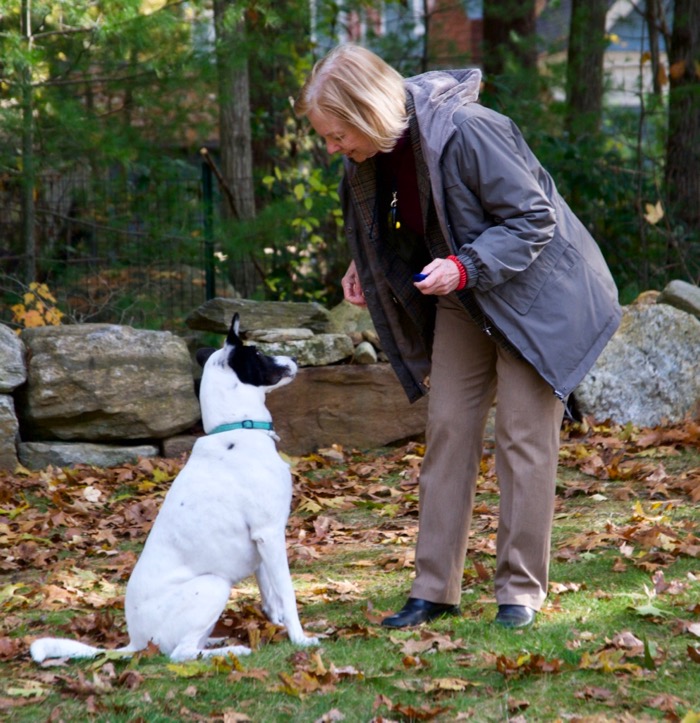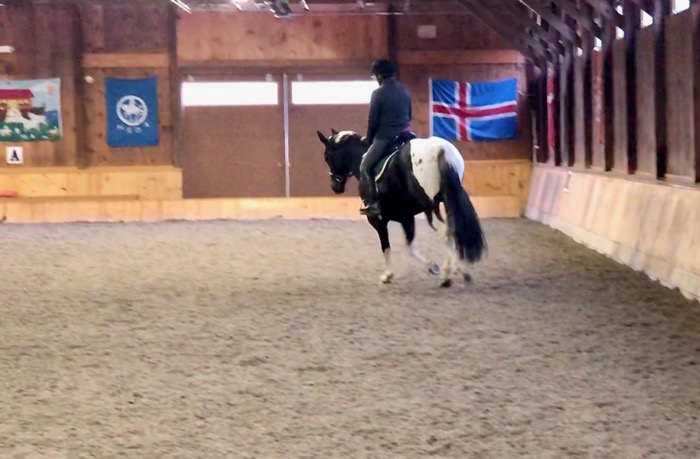Several times a year, I teach a Problem Solving Your Problem Animal class through local adult and community education departments. Each person who comes loves their dog (it’s usually a dog, although I’ve had people discuss cats and parrots, too) but they’re at their wit’s end. Each person has an animal that is annoying, possibly scary, and often causing a rift in the family. They’ve tried going to classes. They’ve done what they thought was right, but their pets still didn’t do what they wanted, and instead of having the companionable animal friend that they’d imagined, there was stress all around.
In the class, I introduce them to three topics that opens the door to a different way of thinking about their animal, about their relationship with the animal, and about how to get behavior that solves the animals’ problems (for they wouldn’t be behaving “badly” if they didn’t think something good would come of it.) I talk about umwelt, ethology and behavior science. It’s not a long evening, maybe two hours, but simply having this kind and effective perspective can change their lives.
Last night, two women came to get help with a large-breed 10-month old puppy. They’d gone to a highly recommended trainer, who put a prong collar and a shock collar on the dog, but he was still lunging at people (in great cheerful, puppy enthusiasm,) and he was beginning to get dog reactive. Their relationship with the puppy had become one of frequent punishment. It didn’t feel good to them, but they didn’t know that there were other options. I introduced the idea that you could focus on what you do want, and then train, in incremental and rewarding ways, to get to that goal. Those of us who have been doing positive reinforcement training for a long time have integrated this approach into our core. We do it without thinking. It’s how we function. But it’s new to most people that I come across. They use punishment because they don’t have a framework to think otherwise. I’ve also had people come to my talk who had gone to clicker classes, but had no success. That’s because their instructors had taught the clicker as a tool to a goal, but missed teaching what comes first, the underlying precepts of why we train this way at all.
For me, it’s all about relationship and communication. I try to respect the animal’s needs and intelligence, while having them be successful – and enjoy being – in my human world.
Halfway through the class last night, one of the women asked, How do we know we have a good trainer? A great question. This is how I answered it: Find someone who makes the interaction between you and your dog joyful.
Even when the dog is “misbehaving,” how you train out of that entails steps, and each step can be fun.
A trainer, and the dog, should look like this. Here is Karen Pryor, a few years back, interacting with my dog, Lily. Lily was a barker, easily distracted, and reactive. But look at her here! This is joyful communication.

Goats have their own ideas about things. But they can also be trained. Joy happens when the training is a conversation.

Some animals don’t express joy as obviously cheerfully as dogs. Tonka shows his pleasure by a forward ease of movement and subtle facial expressions.

Not every moment while working with your animal will be joyful. Life isn’t like that. But if your instructor enables you to visualize the behavior that you want, and helps you to take the small, rewarding steps to get there, then you’ve found the right trainer.


HI Terry,
Thanks so much for this post. For me, your quote here is a cornerstone of education:
“For me, it’s all about relationship and communication. I try to respect the animal’s needs and intelligence, while having them be successful – and enjoy being – in my human world.”
My horses and my dogs are already successful in their own worlds, and I need to help them be successful in the human world.
To me a good trainer certainly tries to make the interaction between me and my horse/dog joyful, but a good trainer is also someone who sees each horse/dog as an individual with a unique personality.
I’m re-reading a wonderful book titled, Beyond Words, by Carl Safina. The book focuses on the behaviors of elephants, wolves and orcas but it emphasizes that these animals and many others are “who” animals rather than “it” animals. They have unique personalities as individuals. Successful training has to account for the “who” you’re working with rather an “it”.
Thanks again!